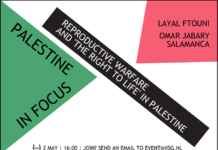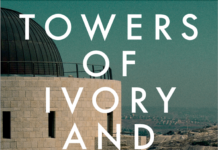Bethan McKernan
The Observer / October 7, 2023
Inhabitants of Gaza now face the prospect of an Israeli ground offensive.
Fifty years ago this week Israel faced a threat to its very existence after the surprise joint attack by Egypt and Syria that marked the start of the Yom Kippur [October War] war. In the early hours of Saturday – the final day of the Jewish high holidays – history appeared to repeat itself. Israelis were awoken by rockets and air raid sirens as the Palestinian militant group Hamas launched the biggest military challenge Israel has faced since that fateful day in 1973.
For the first time in the 75 years since Israel’s creation, Palestinian forces managed to seize control of areas inside the Green Line, on the other side of the would-be borders of an independent Palestinian state. More than 150 Israelis have died, with the death toll likely to rise significantly, along with at least 198 Palestinians. Dozens of Israeli civilians are believed to be held hostages in their homes, or have been taken into the Gaza Strip.
The kidnap and murder of three Israelis in the occupied West Bank led to the 2014 war between Hamas and Israel. But nothing quite like this has happened in the Arab-Israeli conflict. While 1973 was a war between conventional militaries, this time, the consequences for civilians on both sides are likely to be horrific.
Officials in Hamas, the Islamist movement that seized control of the Gaza Strip in 2007, often say that they will respond to Israel “at a time and place of our choosing”.
But the timing and scale of this unprecedented aerial and ground attack have caught both Israelis and Palestinians by surprise.
It was ostensibly launched in response to Jewish visits over the holidays to the fault line al-Aqsa mosque compound in Jerusalem, which is the holiest site in Judaism and the third holiest in Islam. Yet in the past Hamas has settled for less serious attacks for graver violations of the Jerusalem status quo.
It has also raised fears that the operation, dubbed “Al-Aqsa deluge” by Hamas, could spark a wider conflagration, drawing in Jerusalem and the West Bank, or Hezbollah in Lebanon. Memories of the intercommunal violence that consumed Israel’s streets during the last war with Hamas, in 2021, are still very fresh.
The attack represents a serious intelligence failure for Israel’s security establishment, which assessed that Hamas was not looking for a full-scale war; the two sides had just negotiated a truce, mediated by Qatar, Egypt and the UN, after three weeks of violence and unrest at the separation fence.
Part of Israel’s calculations appeared to be that Hamas would not want to imperil an economic lifeline of the past two years – the issuing of 18,500 permits for men from Gaza to work in construction and agriculture in Israel.
The strategy, introduced after the May 2021 war, has seen more people leave Gaza in the past 30 months than in the first 14 years of the siege put together, and has brought in upwards of £2m a day for the strip’s 2.3m people, more than half of whom live below the poverty line.
But the Ezzedin al-assam Brigades, Hamas’s military wing, and Palestinian Islamic Jihad, a smaller and more hardline faction also active in Gaza, had other plans. The West Bank is suffering the worst wave of violence in 20 years, in large part fueled by Hamas, which seems certain to ignite a third intifada, or Palestinian uprising.
It appears that the group’s leaders wanted to strike first, on their own terms. In doing so, they are trying to position themselves, rather than the corrupt and weak Palestinian Authority in the West Bank, as the true representatives of the Palestinian people.
The shock offensive is also certain to derail the budding normalization of relations between Israel and Saudi Arabia, home to Islam’s two holiest sites, and the religion’s geopolitical anchor – which in theory could pave the way for the acceptance of the Jewish state across the Muslim world. Hamas also turned to violence in the 1990s to express disapproval of the Oslo peace process between Israel and Fatah, the Palestinian Authority’s ruling party.
What is less clear is what Hamas is trying to achieve in the long term, and how much coordination and support such a huge attack received from outside elements such as Hezbollah or Iran. At the very least, the attack is a clear signal that the 16-year-old siege of Gaza is not sustainable.
Events also present formidable challenges to Israel’s far-right government, which has overseen domestic chaos triggered by its proposals to overhaul the judiciary, as well as escalated tensions with the Palestinians, since taking office last December. For the extremists in prime minister Benjamin Netanyahu’s cabinet, this is a more than ample pretext for a return to full-scale war in the region.
An Israeli ground offensive in response, the first since 2014, is likely. The only thing that appears certain is that Gaza’s inhabitants, already battered by four wars over 16 years, are going to pay the heaviest price.
Bethan McKernan is Jerusalem correspondent for The Guardian












